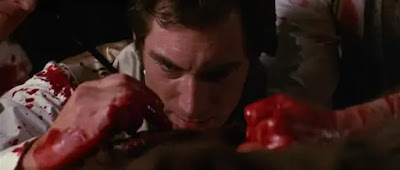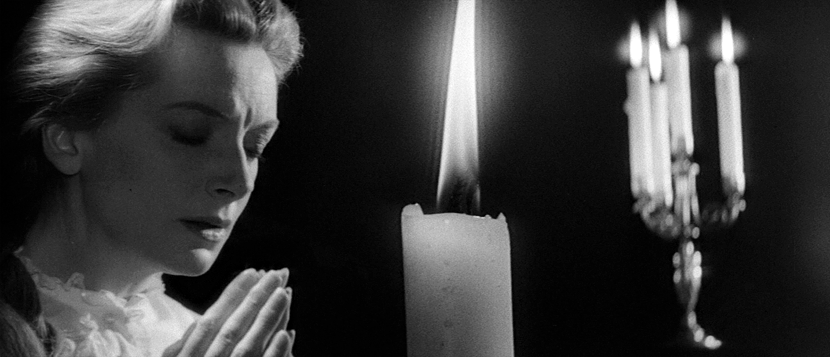Castle was fun. And not a bad film-maker, either—just not a great one. He wasn't much on atmospherics (as a producer, he always kept his eye on the budget), but his films were done with a humor and an archness that came across from the screen, even without the swooping skeletons and shocked theater-seats that he would plant in the loges.
 |
| William Castle explains it all for you. |
Sardonicus was once Marek Toleslawski, a peasant farmer, whose father Henryk buys a lottery ticket. That night, however, his own ticket gets punched and he dies in his sleep. The ticket, however, is a big winner. Small problem, though: it is buried with Henryk. Marek's wife at the time, Elenka, persuades him to dig up his father's corpse to retrieve the winning ticket, and the sight of his father's grinning corpse, creates a hysterical reaction—he can no longer speak, and his face has been paralyzed into a terrifying grin, similar to the ghastly one he saw on his father's corpse. Seeing his face, his wife died of a heart attack and Marek's purloined winnings have made him rich enough to buy a castle and a title—the Baron Sardonicus.
The Baron spends his life in torturous experiments (on others, of course!) hoping to find a cure for his condition. Somehow, with his bad reputation, ghoulish face and torturing habits, he managed to win the heart of Cargrave's former flame (which speaks volumes about her, even if Sardonicus cannot...speak volumes, that is). But, the good doctor, despite being disturbed about the whole situation, reluctantly agrees to try to find a cure for the Baron, out of love for Maude. As the baron has mentioned that he will mutilate her face, if he isn't cured, well, that's just another incentive.
 |
| Baron Sardonicus, being reflective. |
Like most Castle movies, one can't take any of this too seriously, as the film is being presented in deadly earnest, despite the crazy ideas and the Sardonicus make-up that produces more mirth than actual horror. It is a jolly little ride, not too different (or as frightening) as the spook-house at the fair, and its effect is just as short-lived.
































































































